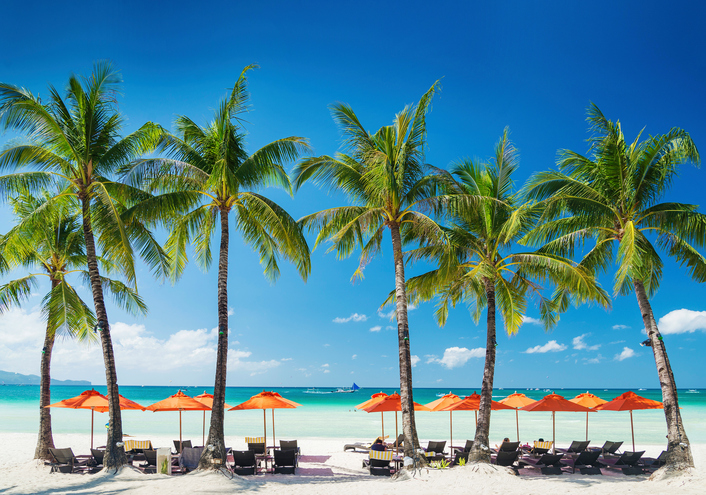The Philippines reopened its top holiday island last Friday and promised sustainable tourism and a greener environment, welcoming back visitors after a six-month cleanup ordered by a president who had described it a “cesspool”.
Hundreds of excited local and foreign tourists barred from Boracay since April trooped to a jetty serving as the main gateway to the 10-square-kilometre (4-square-mile) island, which is famed for its sugary white sands, turquoise waters, lively nightlife and abundant water sports.
“We have already done the first phase, this is the rehabilitation. There is no more cesspool,” environment minister, Roy Cimatu, told a news conference.
In April, President Rodrigo Duterte ordered Boracay’s closure after seeing a video of dirty water being piped out to sea, one of the side-effects of decades of unregulated construction that caused the collapse of its tiny sewerage system.
Boracay attracted two million visitors last year and raked-in $1 billion in revenues but was under heavy environmental stress, with garbage pile-ups, rampant land encroachment, and narrow roads filled with fumes from clogged traffic.
But the island is now turning over a new leaf.
Beach parties are now banned, as is smoking and drinking. Along the shoreline, there will be no more vendors, masseuses, fire dancers or watersports, and the scores of moored boats for years a fixture on the beach have been forced to anchor elsewhere.
Only 19,000 tourists will be now be allowed on the island on any given day, with the number of workers capped at 15,000 daily.
“When we think about it, our problem is everybody wants to go to Boracay,” Tourism Secretary Bernadette Romulo-Puyat told reporters on Friday.
The government plans to extend its restoration beyond Boracay to other tourist spots on the archipelago of over 7,000 islands, she said.
Prior to the closure, authorities found about a third of the 600 to 700 resorts on Boracay were operating without permits. Some 157 hotels offering 7,308 rooms were allowed to operate starting Friday.
In the six-month closure, authorities removed illegal sewage pipes, closed or demolished unregistered hotels and expanded widened roads, although work is still ongoing.
Tourists arriving on Friday were greeted by, rubble, excavators and partially-knocked down buildings along roads, but there were flashes of Boracay’s idyllic past for years obscured by crowds and commercial activities.
“Manage your expectations. The front is beautiful, the water is pristine and clear, but of course the roads are still being built,” tourism minister Romulo-Puyat added.







